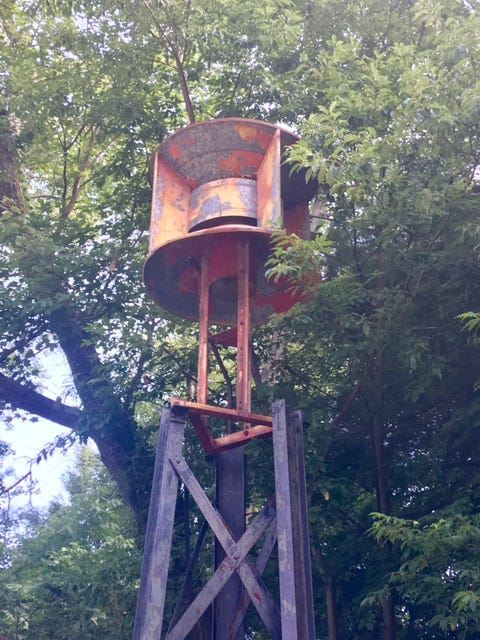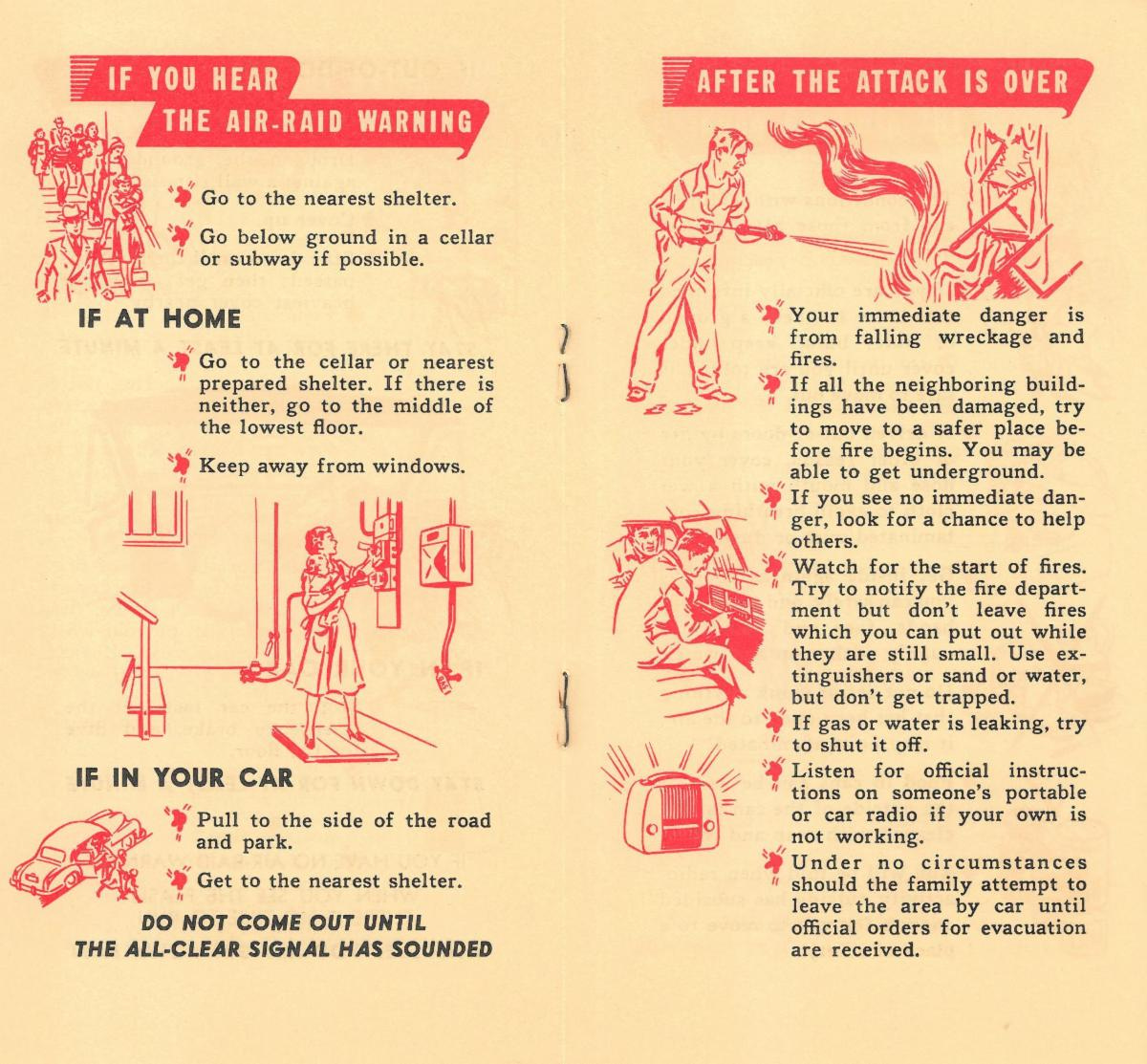This is an Air Raid warning siren. It’s not part of our collection but can be found outside of Bancroft School. Sirens like these are a product of the Cold War years.
Prior to WWII, the US did not have a very well-defined civil defense system to alert the public of an enemy attack. After WWI, and particularly during the Depression years, the local community defense programs had declined. That changed with WWII. Roosevelt, in preparation for possible war, directed communities to reestablish their local civil defense councils. In May 1941, he formed the Office of Civil Defense and set up nine regional offices to coordinate community and state efforts.
By November 1941 there were civil defense organizations in all states and about 6,000 towns and cities. However, many local programs didn’t take the need seriously. The bombing of Pearl Harbor on Dec 7, 1941 dramatically changed the public’s view on the need for civil defense programs.
After WWII, the interest in a national civil defense system again waned. It wasn’t until faced with the possibility of an atomic attack that the public realized the need for a civil defense system. During the Cold War years of 1961- 1979, organizations at all government levels—federal, state, and local—were formed. These trained personnel, educated the public of the need for fallout shelters and coordinated the development of a national system of warning and communication.
On Aug. 18, 1951, Governor Paul Dever, by Executive Order #14, established the Civil Defense Alert System for Massachusetts. Communities installed air raid warning sirens like the one still in Andover. Information was distributed on the warning signals. “Red alert signal” was one blast lasting 3 minutes or a series of short blasts over a 3-minute period. “All clear signal” 3 one-minute blasts at two minute intervals. On hearing a red alert signal people were supposed to seek shelter.
Information on how to survive an atomic attack was also distributed.
ACHC #2016.066.7
Some of us remember school air raid drills where we climbed under our desks with our arms covering our heads.
Growing up just outside of D.C., my schools had these drills frequently. Older children were given forms for their parents to verify that they could get home within 13 minutes. Those students were considered lucky because they could be with their families in their home bomb shelters when the strike came.
I remember running home from school within the precious 13 minutes. Then I proudly gave the form to my father, a single parent who happened to work in the Defense Department at the Pentagon in a high-level security job. He shattered my hopes when he said that I’d have to stay at school (to die) because he wouldn’t be able to come home!
Luckily, the atomic bomb strikes never happened.
Do you have memories of those years?






